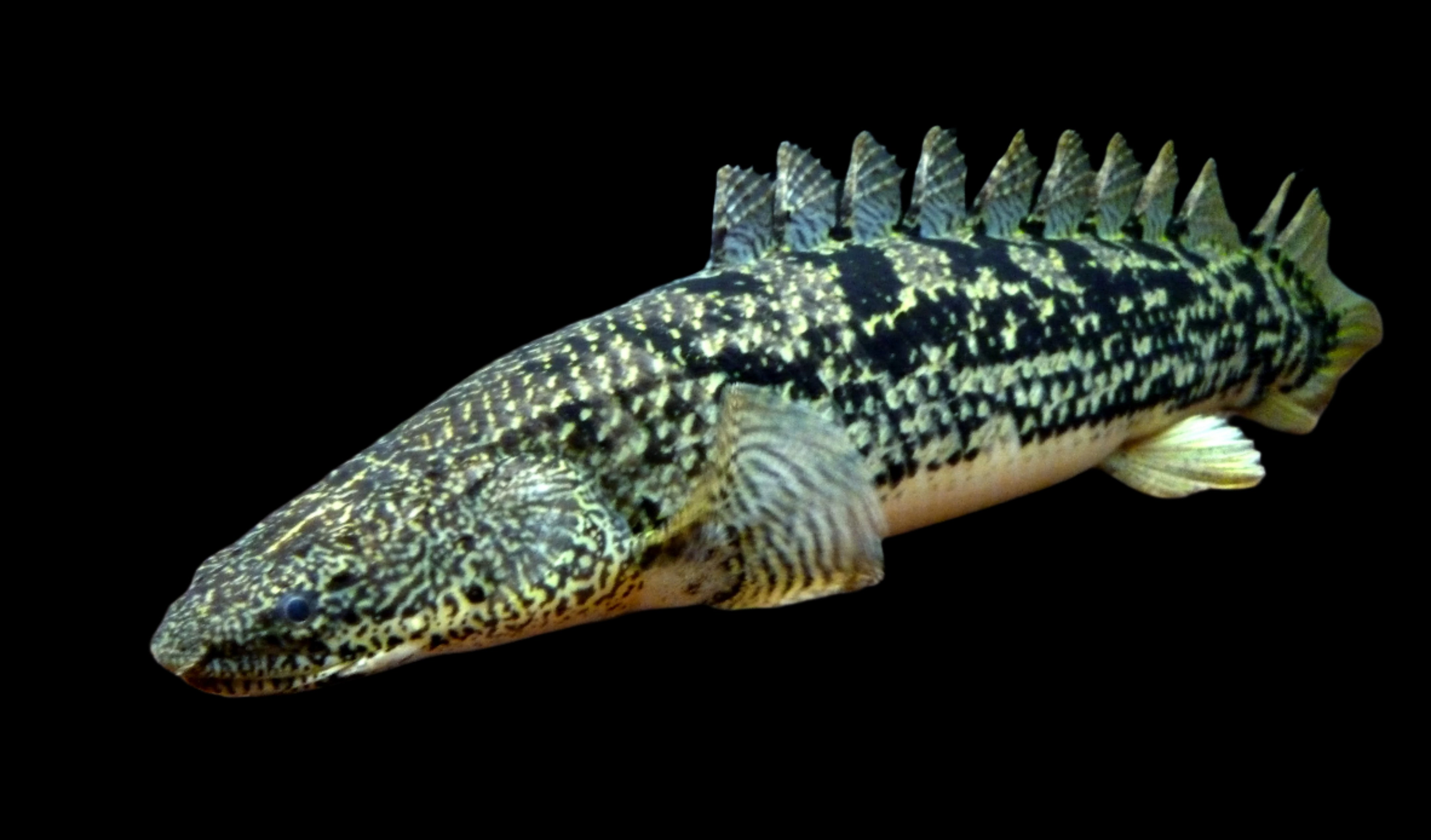Description
Ornate Bichir – A Living Fossil with Regal Markings
(Polypterus ornatipinnis)
The Ornate Bichir (Polypterus ornatipinnis) is one of the most striking and sought-after members of the bichir family. Native to the Congo River Basin in Central Africa, this ancient fish boasts bold black-and-gold patterning, a prehistoric body shape, and a unique ability to breathe atmospheric air. Slow-moving but full of personality, it’s a favorite among oddball enthusiasts and predatory fish keepers alike.
Key Features:
-
Spectacular Patterning: Intricate gold and black markings that look almost hand-painted
-
Prehistoric Appearance: Armored scales, external gill slits, and a long, eel-like body
-
Large & Impressive: Can grow up to 45–60 cm (18–24 inches) in captivity
-
Air-Breathing Ability: Can survive in low-oxygen water thanks to a primitive lung
Tank Requirements:
-
Minimum tank size: 300 liters (75+ gallons)
-
Temperature: 24°C–28°C (75°F–82°F)
-
pH: 6.2–7.8
-
Subdued lighting, soft substrate, driftwood, and rockwork create the perfect environment
-
Must have a secure, tight-fitting lid—bichirs are notorious escape artists
Compatibility:
-
Generally peaceful with tankmates too large to be eaten
-
Excellent for oddball or predator tanks; avoid small fish or shrimp
-
Can be kept with other bichirs of similar size in spacious aquariums
Feeding Tips:
-
Carnivorous—loves meaty foods like frozen shrimp, fish fillets, bloodworms, and sinking carnivore pellets
-
Best fed at night or during low-light periods when they’re most active
-
Feed 2–3 times per week with varied, protein-rich foods
Why Choose the Ornate Bichir?
With its majestic pattern, calm demeanor, and dinosaur-like charm, the Ornate Bichir is a show-stopping centerpiece for any large aquarium. Perfect for aquarists looking to keep a true “living fossil,” it combines beauty, history, and fascinating behavior in one unforgettable fish.
Click & Collect
Livestock will only be bagged once you arrive, or if you contact us in advance to request it ready beforehand.
Local Delivery
Order anything from our in-store range and have it delivered right to you.
-
Minimum spend: £50
-
Delivery up to 10 miles: £10
-
Delivery up to 25 miles: £20
Distances are measured “as the crow flies”, not by road.
Once your order is placed, we’ll be in touch to arrange a suitable delivery date and time.
Please note, delivery may take a little longer as we often group orders together to build an efficient delivery run.
Important: If you’re ordering a large aquarium, please ensure someone is available to help unload the van on arrival.
Dry Goods Delivery
-
DX Express: 1 working day, same-day dispatch before noon 0-75kg
-
Express Pallet: 1–3 working days 75-500kg
If you'd like to add more items to an existing order that hasn't yet been dispatched, please place a Click & Collect order and leave a note asking us to combine the orders.
Please note: We currently only dispatch parcels Wednesday to Friday.
Pre-Order
Want the full details? Check out our Terms & Conditions.
Livestock Delivery
Thursday Delivery – £24
-
Dispatched Wednesday afternoon
-
Delivered Thursday before 1pm
-
Order by Wednesday 12 noon
-
Minimum spend: £50
Friday Delivery – £24
-
Dispatched Thursday afternoon
-
Delivered Friday before 1pm
-
Order by Thursday 12 noon
-
Minimum spend: £50
Saturday Delivery – £29
-
Dispatched Friday afternoon
-
Delivered Saturday before 1pm
-
Order by Friday 12 noon
-
Minimum spend: £50
📦 Want to Add to an Existing Order?
No problem! Just place a Click & Collect order and leave a note asking us to link it with your original one (as long as it hasn’t been dispatched yet).
🛒 Dry Goods Now Included!
You can now include dry goods in your livestock delivery – perfect for topping up supplies in one go.
❄️ Please note: We can’t send frozen food with livestock – please order frozen items separately.
⚠️ Delivery Exclusions
Unfortunately, we’re unable to deliver livestock to the following postcodes:
Scotland & Isles:
AB30–AB56, DD8–DD10, DG3–DG9, DG12–DG14, FK17–FK21, KA18–KA19, KA26–KA30, PA20–PA38, PA80, PH3–PH40
Cornwall Isles: TR21–TR25
All of the following postcodes are excluded:
BT, HS, IM, IV, JE, KW
Plus Channel Islands and Shetland Islands
Payment & Security
Your payment information is processed securely. We do not store credit card details nor have access to your credit card information.

